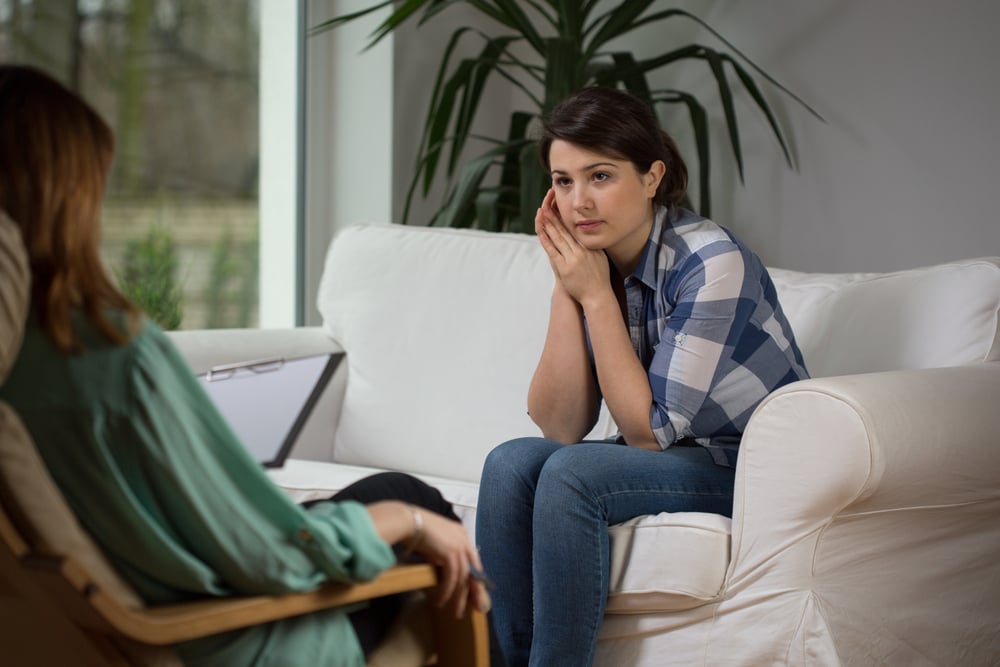What to Do When You Fall in Love with Your Friend: A Practical Guide
Emotional intimacy can happen with a platonic relationship or an intimate one. In some cases, you may start out as friends but then develop romantic...
3 min read
![]() Williamsburg Therapy Group
:
May 22, 2023 3:58:34 PM
Williamsburg Therapy Group
:
May 22, 2023 3:58:34 PM

Separation anxiety is a phenomenon where someone develops disordered anxiousness upon being separated from - or considering the idea of becoming separated from - another person, place, animal, or thing.
Typically thought of as one of the "less severe" mental health concerns, separation anxiety can be a very debilitating and unhealthy condition that creates distress for the sufferer and the people around them.
As such, it's vital to address any concerns you may have about separation anxiety in yourself or others with a mental health professional.
This article will explore separation anxiety, its causes, and its detriments, and then make recommendations for finding help.
Separation Anxiety Resources On This Page:
How To Know If You Have Separation Anxiety: 3 Signs
Treatments For Separation Anxiety
Get Help for Separation Anxiety in Brooklyn: Williamsburg Therapy Group
Only a licensed mental health professional can truly diagnose you or someone you love with separation anxiety.
However, there are some signs to look out for that may indicate separation anxiety, to be further investigated by a professional. Let's take a look.
-1.png?width=3750&height=1394&name=Definition%20Template%20(6)-1.png)
The most commonly considered symptom of separation anxiety is actually only one facet of the disorder: the current separation between the person with separation anxiety, and their "anchor," also known as their attachment figure.
During separation, someone with separation anxiety disorder is prone to a consistent anxiety, as well as panic attacks and mood swings.
They may feel lost or hopeless without their attachment figure, or may show signs of general fatigue.
Watch for signs of distress when you are apart from someone you spend a lot of time with: a spouse, parent, or child.
Children are particularly prone to separation anxiety disorder, so if you're a parent, watch for these signs during your next absence.
Another, though less well-known sign of separation anxiety disorder is general anxiety around the possibility of separation.
People with separation anxiety may try to justify odd behaviors, like following their attachment figure on business trips at great expense or accompanying them to private matters (like using the restroom or hanging out with their personal friends.)
The fear of separation can lead to conflict in a relationship. No matter how close a partnership or bond is, spending at least some time apart is healthy and even necessary. Going to great lengths to avoid time apart is a sign of separation anxiety disorder.
Another sign of separation anxiety is a consistent worry about the death of one's "anchor," or attachment figure.
Note that this is different from a justifiable worry over the imminent death or illness of a loved one. Worrying about the death of one's father, who is in the hospital with Stage 4 cancer, certainly makes psychological sense. Constantly worrying that your totally healthy spouse will die in some sort of accident or will come down with a terminal illness, by contrast, can be a sign of abnormal and debilitating thinking.
If you or someone you know exhibits one or more of the above signs, it's time to get help.
If you're worried that you may have separation anxiety, there are several treatments that may be able to help.
The first and most important step is to enlist the help of a licensed therapist.
The kind of therapy you undergo for separation anxiety depends on your relationship with your attachment figure.
For children with separation anxiety disorder, the most commonly recommended treatment is family therapy.
During family therapy, the parent will learn the psychological mechanisms that are behind the anxiety. The child will work on methods for controlling their anxious thoughts in a way they can understand - which varies with age.
Teenagers are able to understand cognitive behavioral therapy (CBT) and utilize the tools it teaches to improve their anxiety.
Younger children may engage in playful activities to begin building a stronger sense of self and reduce parental dependence.
The parent will also learn methods they can employ to reduce distress in their children, as well as investigate their own propensity for separation anxiety.
If the relationship of attachment is spouse to spouse, the partner with the separation anxiety (or both, if each partner is showing signs) will likely undergo a brief course of cognitive behavioral therapy.
Cognitive behavioral therapy for separation anxiety utilizes a tool called cognitive restructuring, which identifies negative and incorrect thought patterns and works to replace them with productive, healthy, and more logical cognition.
In some cases - typically more severe ones and ones where the patient is an adult - a therapist may recommend an appointment with a psychiatrist to talk about options for medication.
Several medications have been shown to reduce anxiety, which may be able to help control symptoms while the root cause of the anxiety is addressed.
Medications should only be taken as directed by a licensed psychiatrist.
If you're worried that you or a loved one may have separation anxiety, get in contact with a licensed mental health professional.
Our team at Williamsburg Therapy Group is a collective of doctoral-level psychologists, ready to help Brooklyn residents find more peace of mind, less distress, and an overall improved quality of life.
With our unparalleled experience, our team provides top-of-class care for our patients.
Give us a call today to let our patient coordinator find the right therapist for you.

Emotional intimacy can happen with a platonic relationship or an intimate one. In some cases, you may start out as friends but then develop romantic...

Some people are naturally assertive, understanding what they want and using their own abilities to ask for what they need. However, many lack...

Most people have days like that every now and then. Days where you may feel sluggish and unhappy, out of control, or dissatisfied with life. However,...